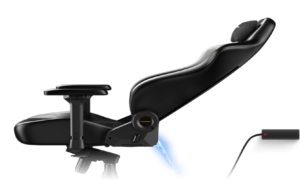Inertial navigation systems are made up of IMU sensors and their gyroscopes and accelerometers together with sensors that receive absolute position data from GNSS satellites in space. It also has magnetometers which are used to measure magnetic fields in three-dimensional space. In today’s era, most appliances like planes, cars, and ships need navigation systems. You can view your location from GPS satellites in space or if you are using your phone you will use a triangulated position from cell phone towers that are known. When it comes to submarines the notion is different since it doesn’t have access to navigational systems when it is submerged. Since there is no access to satellites in the water, an inertial system is used here.
Some of the benefits of inertial navigation systems include;
- It has great concealment and it is not affected by external electromagnetic interference. This is normally gathered since this particular system does not radiate energy from outside.
- Inertial navigation systems can work for long hours on the earth’s surface and underwater as well.
- This particular navigation system can help you detect the location, speed, azimuth, and attitude angle data.
- The data rate is high.
Categories of navigation equipment and resources
- Gyro compass
A gyro compass is normally used to find the right directions. A gyro compass is quite different from a magnetic compass as it is not hampered by any external magnetic field. This compass is normally used to get the right North position which is also an earth rotational axis to offer you a stable directional source. Its repeater network needs to be present in the steering platform for emergency steering.
- Magnetic compass
When it comes to a magnetic compass it works together with the magnetic fields of the earth and it is normally used to get the right planned course for your voyage.
- Autopilot
The autopilot is one of the most effective bridge navigators as it assists human operators to operate the ship as they maintain the steering in autopilot and this helps you focus on other important operational factors. It is made up of hydraulic, mechanical, and electrical networks.
Various traditional navigation techniques
- Ocean swells
In case the skies are too overcast to use, navigators normally depend on the sun, moon, planets or ocean swells for directions. An experienced navigator will be able to detect where the ocean swells are coming from as they go under the waka. However, you should make sure you don’t depend on ocean swells as much since they tend to change direction from time to time.
- Nearing land
Most navigators normally use various signs that show them that they are close to land before they do land. Some of the ways navigators know that they are about to reach their destination are when they see things like clouds hanging over high islands and birds cooking out to fish during the day.
Conclusion
As a navigator, there are a lot of things you need to put into consideration so that you can reach your destination safely and on time.



































